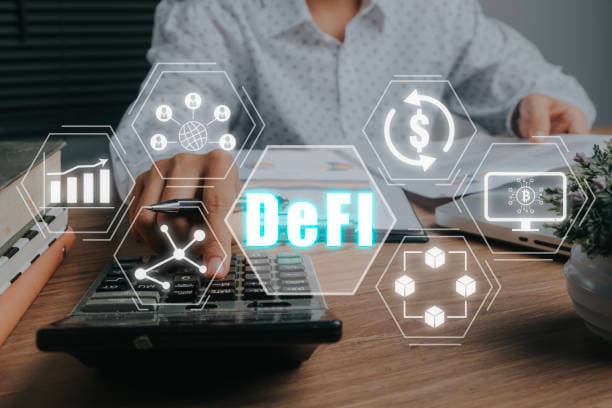DeFi is a significant break from traditional finance conventions, using the power of blockchain technology to usher in a dynamic and inclusive range of financial services. In this post, we will go deeper into the fundamental components of this new paradigm.
The Core of DeFi: Unveiling the Blockchain Backbone
The cornerstone of decentralized finance is blockchain technology—a sophisticated distributed ledger system that precisely records transactions over a network of interconnected computers. This fundamental component ensures the core values of transparency, immutability, and security in all financial transactions.
Smart contracts, the cornerstone of DeFi, emerge as self-executing agreements in which contractual conditions are directly entrenched inside the code rather than left to middlemen. These automated protocols herald in a new era of frictionless transactions, profoundly changing the financial environment. Nonetheless, despite its promises, DeFi is not without its difficulties. Smart contract vulnerabilities, the ever-changing nature of markets, and shifting regulatory sands present challenges that both users and developers must negotiate with caution.
Decentralized Exchanges (DEX)
Unlike traditional exchanges administered by central authority, DeFi introduces DEX, a paradigm shift that allows users to execute trades directly from their digital wallets, keeping complete control over their assets and reducing the threat of hacking.
DeFi platforms go beyond traditional banking by providing lending and borrowing services that are not limited to banks. Peer-to-peer lending allows individuals to lend their assets to others, promoting financial inclusion on a worldwide scale.
Yield Farming and Liquidity Mining: Cultivating Returns
Yield Farming, a DeFi ecosystem idea, allowing users to use their assets to develop additional tokens. This involves lending or staking digital assets in decentralized protocols, which are sometimes known as liquidity pools or yield farms.
Yield Farming is all about giving liquidity to decentralized exchanges (DEX) or lending platforms. Users commit their tokens to these liquidity pools, increasing the platform’s overall liquidity. Participants receive supplemental tokens, often in the form of governance tokens, in addition to a percentage of the platform’s transaction fees. These coins allow holders to participate in decision-making processes within decentralized systems. Although closely related to Yield Farming, liquidity mining has distinct properties. Users provide liquidity to a decentralized platform in exchange for a part of the network’s newly issued tokens. These practices not only function as financial incentives, but also as pillars that support the liquidity and evolution of decentralized platforms, cementing their significance within the larger DeFi narrative.

Navigating the Regulatory Maze
In a context characterized by rapid innovations and technical breakthroughs, efficient navigation of the complex regulatory framework around decentralized finance (DeFi) needs an unceasing desire for clarity. Established regulatory frameworks are being scrutinized, adapted, and occasionally confronted with obstacles as they strive to conform with the particular characteristics of decentralized financial systems.
The rate of innovation in DeFi frequently outpaces regulatory agencies’ ability to keep up, resulting in a regulatory gulf where developing technology and financial instruments enter unexplored areas. This schism has highlighted important issues about compliance, responsibility, and potential hazards.
Countries around the world take a variety of approaches to DeFi regulation. Some see it as a vehicle for financial inclusion and technical growth, while others are concerned about possible hazards such as fraud, market manipulation, and money laundering. As a result, authorities are increasingly engaging with the DeFi community, recognising the critical need to comprehend the complexities of this technology and its repercussions. The overriding goal remains to create a happy medium between encouraging innovation and managing associated risks.
The Future of DeFi
As DeFi continues its inexorable ascent, the horizon brims with opportunities for further growth and global acceptance. User experience innovations, scalability solutions, and seamless cross-chain interoperability are all primed to take DeFi into unknown territory.
Conclusion
Decentralized finance exemplifies a major change in our understanding of financial services. DeFi not only examines and redefines traditional banking paradigms, but it also extends an invitation to people all around the world to participate in a more convenient and transparent financial reality. This change unfolds slowly across multiple nations, carefully considering user desires, developer innovation, and expert insights, with the guarantee of a journey distinguished by continuing evolution and rising worldwide adoption in the future.
